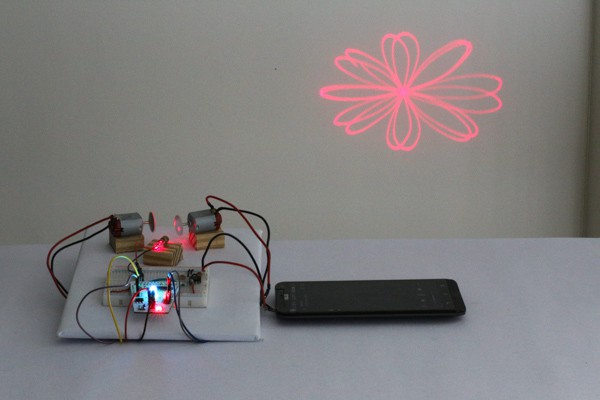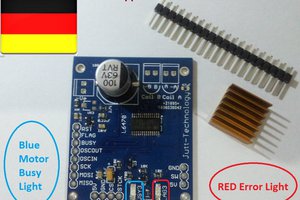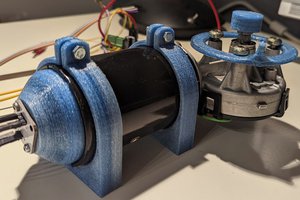Schematic:

tinyDriver has the following specifications:
- Atmel ATtiny84A microcontroller
- Integrated TI DRV8835 Dual-H-Bridge Motor Driver
- Diffused RGB LED
- Standard ICSP header for programming
- 500 mA PTC resettable fuse
- Reverse polarity protection
- 5 V regulator
- Power indicator LED
- Breaks out all pins of ATtiny84A
- Jumpers to disconnect LEDs and motor driver
- Mounting holes
Applications:
2WD Robot with ultrasonic sensor:

A laser display that syncs with audio input:

 Mahesh Venkitachalam
Mahesh Venkitachalam






 Andrew Kowalczyk
Andrew Kowalczyk

 JP Gleyzes
JP Gleyzes
This is an interesting project. One suggestion: in some cases one may want to measure the current fed through the driver (I'm reluctant to feed current to any motor without doing that). The poor man's option is to put a very small resistance in series with the ground return from the H-bridges and guess the load current knowing the switching state. I know this drops the efficiency of the bridge further and in this case may mess the voltage of the ground reference of the DRV8835 but if you find this feature of interest you may consider leaving a gap with a 0 ohm resistance and a few traces that may be used in case someone wants to use this.